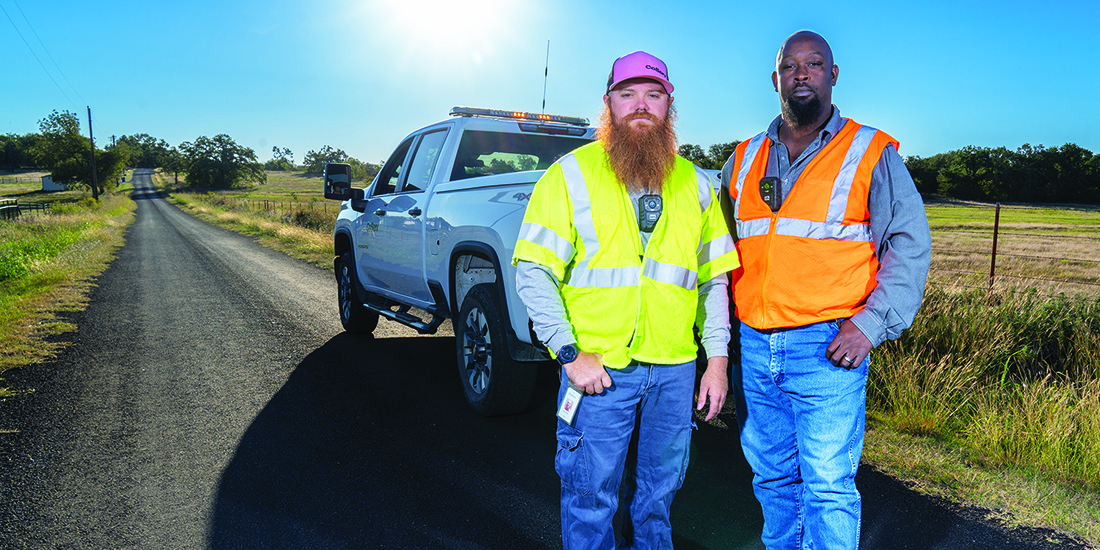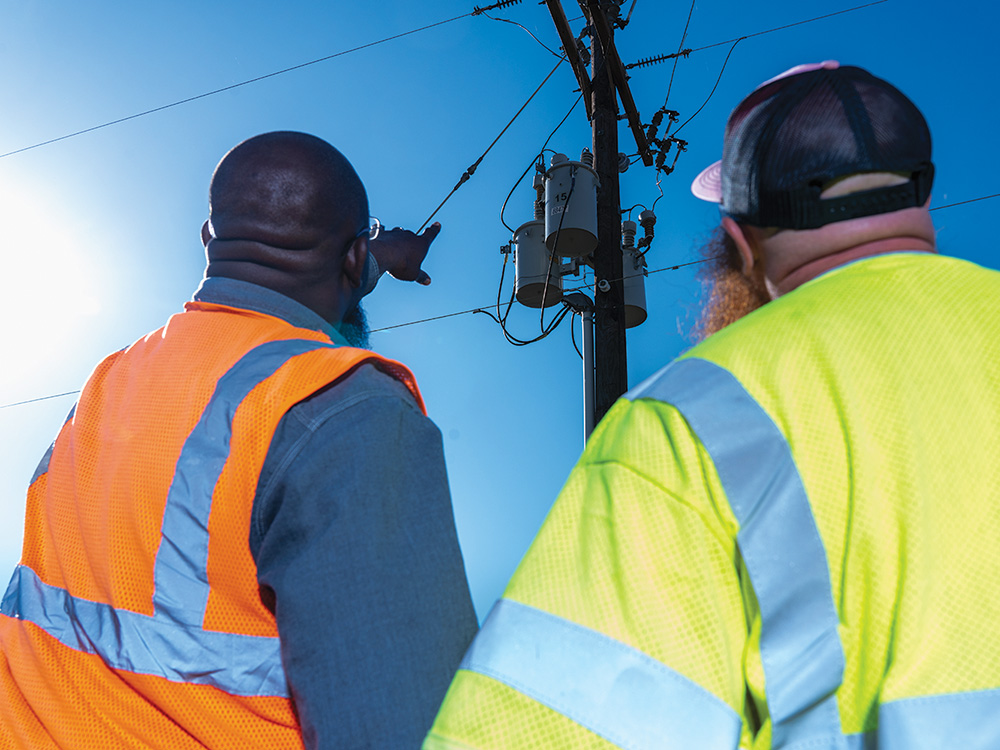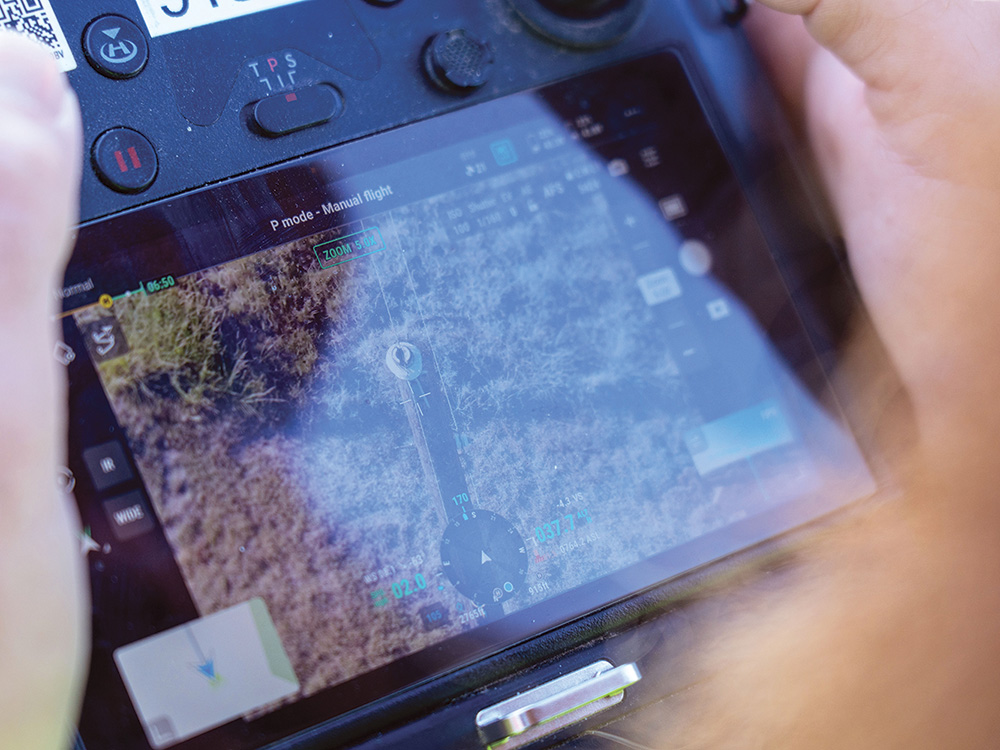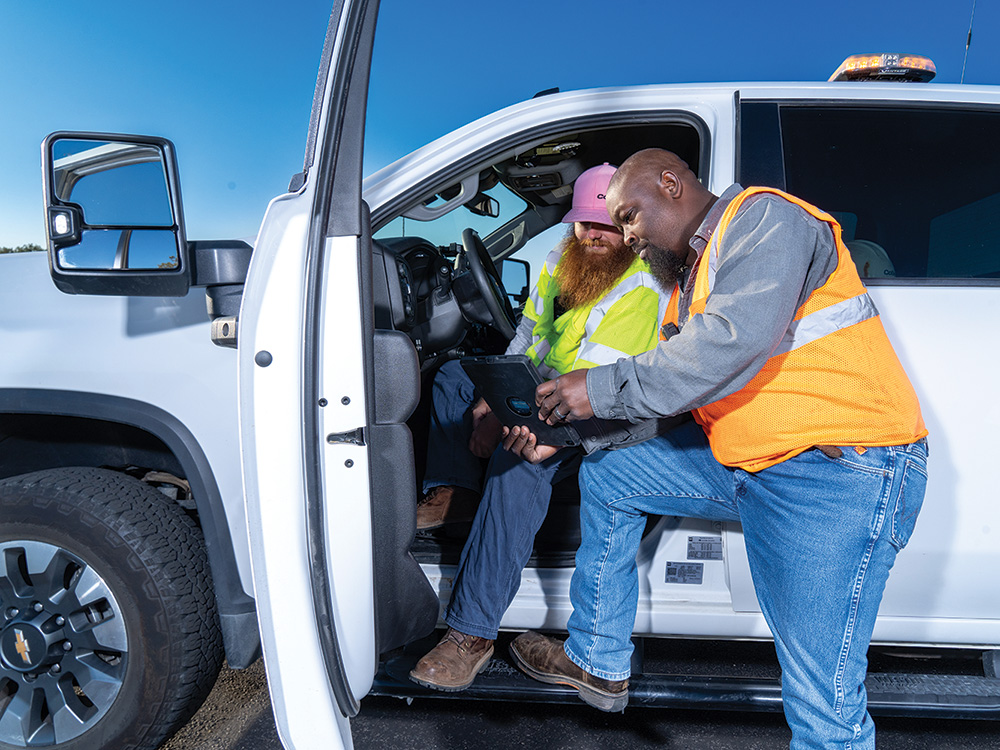Ride Along with CoServ’s Power Quality Team

A lone hawk soars through the thermals in the skies above Valley View, but it won’t be flying solo for long. On the ground, Dakota Mayor, a Power Quality Drone Pilot, unfolds his CoServ drone and prepares to launch it off the back of his truck.
It comes to life with a hum and a whir as the propellors lift it into the sunny skies. Dakota flies to the nearest utility pole and snaps a photo. With each click, the drone captures three images, one wide, one zoomed-in, and one thermal.
Then it’s on to the next pole and the next until the drone is almost out of sight. Then, it’s time to hop in the truck to continue to the next vantage point and the process repeats until they reach the end of the line.
The high-resolution images are then downloaded and analyzed for potential irregularities or problems.
“We look for insulators with a burn mark on them, which usually means they’ve been hit by lightning, sometimes the tie wires come loose, which could cause the line to come in contact with the cross arm,” Dakota said. “Eventually, these problems are going to become big and then you could have an outage.”
By the end of September, Dakota and Ty Flemming, also a Power Quality Technician and drone pilot, had inspected the circuits from 30 of the 32 substations and identified more than 500 issues. The most common problem is a bad insulator, followed closely by broken crossarms or braces.
Each issue becomes a work order and CoServ linemen service crews are assigned to repair it. This preventative maintenance is a key part of CoServ’s reliability puzzle, which is reflected in CoServ’s SAIDI score, a measure of outage frequency and duration.
"As a former lineman, I'd rather fix issues on a clear day than on a stormy night," Dakota said.
The drone can also spot places where trees or vegetation are encroaching on the right-of-way. They contact CoServ’s Vegetation Management Team, who can schedule tree trimmers. (see the October issue of Texas Co-op Power magazine).
CoServ’s Communications Team rode along with Dakota in October as he inspected power lines in Valley View near Lake Ray Roberts.
Flying a drone can stir curiosity from the public, but it’s important to note that CoServ drones are only documenting CoServ infrastructures and only certified drone pilots can do aerial line inspections. The pilots are required to have CoServ hats, badges, shirts and vehicles, with lights on.
Dakota said he also makes an effort to not fly the drone around livestock or other animals who could become agitated or fearful of the drone.
“If you ever have questions or concerns, please come talk to us and we’ll confirm why we are there,” Dakota said. “Preventative maintenance is critically important and one of the reasons CoServ is one of the most reliable utilities in Texas.”
To learn more about our reliability and preventative maintenance, visit CoServ.com/Reliability.



